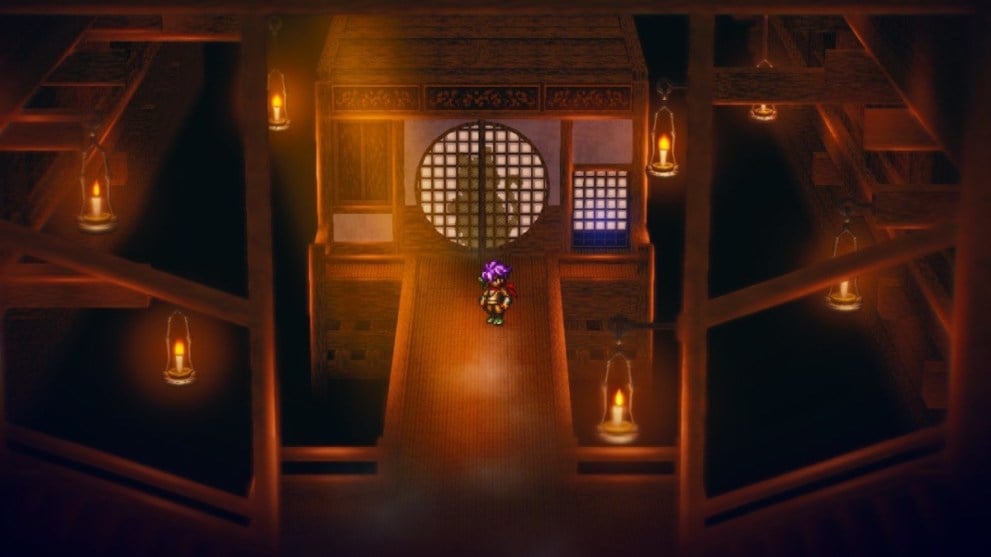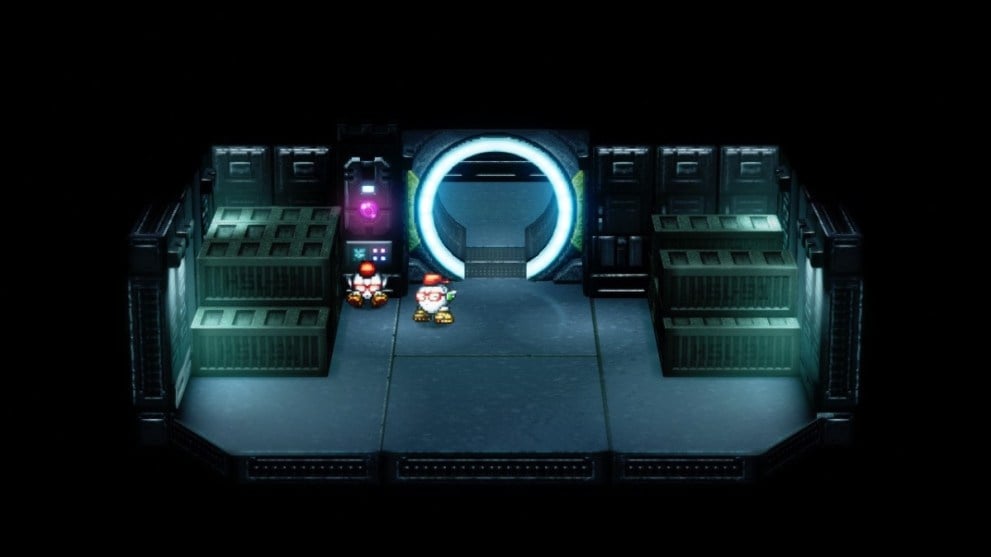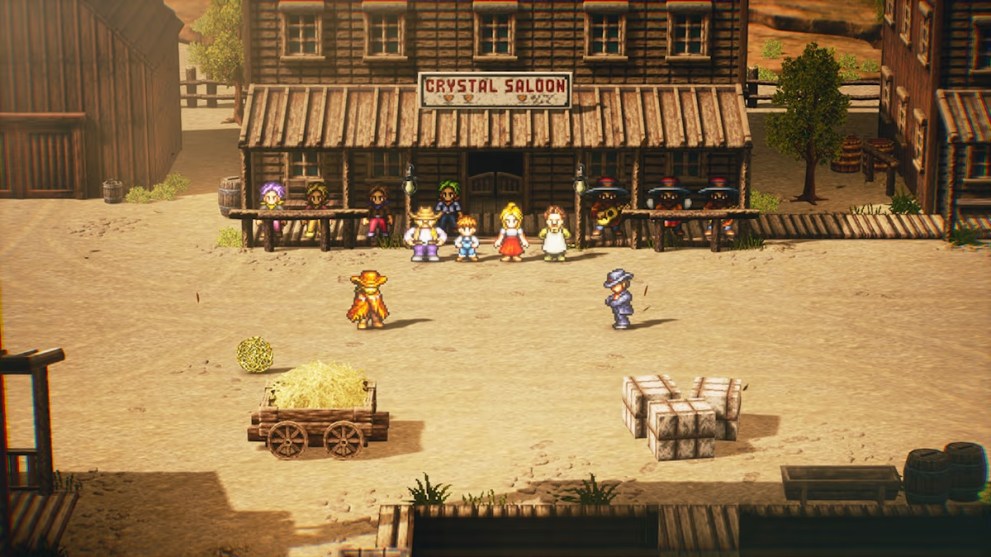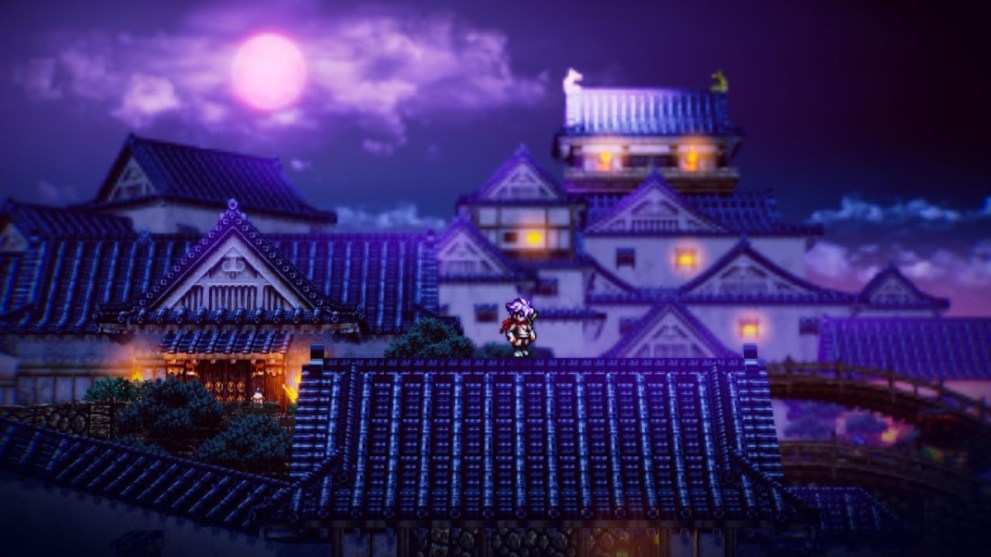It’s no secret that Square dominated the 1990s when it game to JRPGs. So many beloved classics from that decade were born at the hands of their creative direction: Final Fantasy III, Chrono Trigger, Secret of Mana, Super Mario RPG—the list goes on and on.
A lesser-known JRPG to add to this list of the finest games of the 90s is Live A Live, and the reason why it probably hasn’t been heralded alongside these other greats is because it never left Japan to be officially localized in the west.
As a fan of Square’s early masterpieces, I was surprised that I had never even heard of Live A Live before this year’s remake of the 1994 game was announced. After spending some time with the revival, I feel as though Square Enix is treating us to what is essentially a brand new experience for the western audience while capturing the same magic of those 90s JRPGs we hold close to our hearts.
Live A Live is quite unlike any game I’ve played before. Instead of one cohesive storyline with a single playable protagonist and recruitable party members, the game is sectioned off into distinct scenarios that can be played in any order. Each scenario features a different protagonist in various eras and locations throughout time: Prehistory, Imperial China, Edo Japan, Wild West, Present Day, Near Future, and the Distant Future.

Each of the protagonists in these eras has a unique story and problem to address, and each has their own skill or ability that helps to drive their narrative. Fortunately, the battle system is the same across all scenarios, and I’ll touch more on what that’s like in a bit.
There is currently a free demo for Live A Live on the eShop that allows players to try a bite-sized sample of three of the game’s nine scenarios. So far, I’ve had the opportunity to play through these three scenarios included in the demo (Imperial China, Edo Japan, and Distant Future) as well as the Wild West scenario.
Because time is a big ball of wibbly-wobbly, timey-wimey stuff, I decided not to play the scenarios in chronological order and instead started with the Edo Japan chapter.
In this scenario, you play as a young shinobi (ninja) who is called upon to rescue a political prisoner from deep within the castle of a corrupt Shogun. It’s made clear immediately that you have a significant moral choice to make: use a gifted invisibility cloak to sneak in peacefully, kill only those who stand in your way, or brutally slay every single guard on the premises.

This offers various ways to approach the scenario (and promotes replayability). I attempted to sneak in peacefully until I came across some guards that I could not figure out how to get past without fighting. After each battle, you are reminded of how many murders you are responsible for, which feels a bit chilling. I’m not sure what the consequences of this will be later on, if any.
Engaging in combat in Live A Live is a bit different than what I was used to. There is a stamina meter that needs to fill before you can attack or use an item, which is a familiar concept, but the combat takes place on a grid on which the characters and enemies can move around instead of remaining static. You learn new attacks and magic as you level up, and each attack can hit specific parts of the grid (close range and long-range), so moving around is an important part of the strategy.
I played the Distant Future scenario next, which lets you play as an adorable sentient robot who beeps and whistles like Wall-E. The focus here is way less on combat; instead, you’re traveling aboard a spaceship with a crew of humans, each of who have complex relationships and interactions with one another.
This chapter has a much heavier narrative approach with a lot of dialogue and exploration. The game rarely tells you precisely what to do, so it’s up to you to poke around and figure out what’s next, especially after things on the ship unexpectedly take a turn for the worse.
The other two chapters I previewed were Wild West and Imperial China. In the former, you play as a notorious gunslinger called the Sundown Kid who teams up with his rival to drive out a bandit gang from town. Sundown’s ability is that he can use special traps against the gang; it’s unique and adds to the strategy, but it isn’t as exciting as some of the other protagonists’ abilities.

In Imperial China, you play as a Shifu who is nearing the end of his life and hopes to find a successor to teach his kung fu knowledge to. This one involves some more choices about whether you want to train several characters evenly or put all of your eggs into one basket and train one to be extremely powerful. This scenario has a lot more combat than some others do.
As you can probably tell, each of the scenarios offers something unique. If you love battling, you’ll probably enjoy chapters such as the Imperial China the most. If you prefer a richer story and character experience, you’ll adore the Distant Future scenario.
And even if any of those things aren’t your cup of tea, none of the scenarios are drawn out too long that it becomes a slog. They each last about 2-3 hours, and none of them so far have overstayed their welcome. They tell their own concise story, and it’s impressive that they all manage to stay distinct and interesting.
The HD-2D graphic style that Square Enix decided on for Live A Live is exactly what the game deserves. The art style is absolutely gorgeous, and it is easily one of the nicest-looking games on the Nintendo Switch. I did a few comparisons to the original Super Famicom game and noticed that the developers somehow managed to retain the style of the sprites while adding an enormous amount of detail and vibrant color. This is the ideal art style for remaking sprite-based games.

I’m very eager to play the rest of the scenarios in Live A Live and see if the trend continues or if the other chapters will begin to fall flat. I’m especially interested in seeing how the entire story comes together once all of the individual scenarios are finished. Each plot feels pretty separate, so I’m wondering how it will all be tied together.
Until then, I’ll continue to zip around the various stories through time and learn about each of the protagonists. At this point, I already feel as though I may end up placing Live A Live on my shelf of favorite classic JRPGs next to Square’s other games.
Live A Live releases for the Nintendo Switch on July 22.
